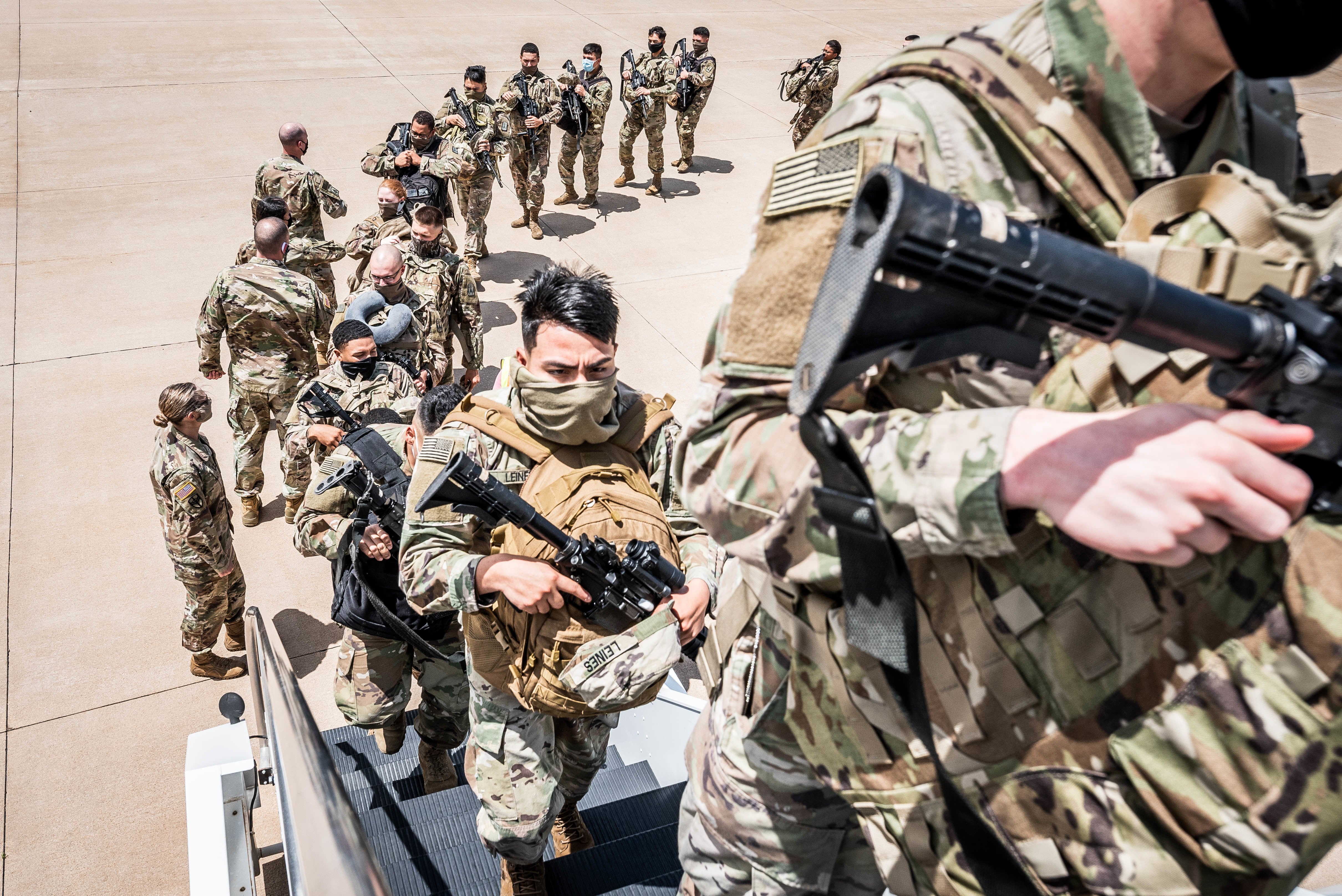The Army’s top uniformed officer said Thursday that he doesn’t intend to trim the size of the service, and expressed concern that the current force might have to rapidly expand in the case of an unforeseen event.
But the Army is also balancing a once-in-a-generation modernization push that limits how much money would be available to add soldiers to its payroll.
Right now, the Army has about 1 million soldiers in all three components, with the number of active-duty soldiers at about 485,000. That’s about what it was 20 years ago when the United States was attacked on Sept. 11, 2001, Army Chief of Staff Gen. James McConville noted during a Defense Writers Group event Thursday.
“We have basically the size of the force that we went into Iraq and Afghanistan [with], and we quickly had to grow that force to 570,000,” McConville said. “We had to bring in about 150,000 National Guard and Reserve [troops] on active duty to get to about 720,000. And we were still extending our soldiers for 15-month rotations.”
Troop rotations to those war zones have fizzled since the surge years, but the Army remains taxed by ongoing demands, which include staffing about 60 percent of combatant commanders’ needs across the world.
RELATED

“I have concerns about cutting end-strength because of what I see as the stress on the force right now,” McConville added. “And if we’re going to cut end-strength, then we need to take a hard look at what we do not want the Army to do.”
The Army is in the process of testing and acquiring new equipment to replace systems like the Apache helicopter and the Bradley fighting vehicle, relics of the last modernization push in the 1980s.
At the same time, Army leaders have wanted to grow the force to more than 500,000 active-duty soldiers by 2028. Though the current plan of adding 1,000 to 1,500 soldiers per year may come close to reaching that mark, the flat budgets leaders anticipate may force them to prioritize one ambition over the other.
“We’ve been very judicious about moving [money] into modernization priorities,” McConville said. “From where I sit, and what I believe, is that the Army must transform about every 40 years.”
Service leaders have been combing through their budgets, a process dubbed “night court” reviews, to shift funds around and prioritize those programs deemed most important.
Those reviews have been working to salvage future weapons that are still in research and development. As they become ready to procure and field, the service could face some difficult choices.
When asked whether end-strength would be trimmed to fund modernization, McConville said simply, “That is not my intent.”
Modernization has been the sacrificial lamb when budgets tightened in the past, but that likely won’t be the case this time, according to Lt. Gen. James Pasquarette, Army deputy chief of staff for programs
“Since the end of the Cold War, when the Army has been faced with a significant downturn in the top line, the easy button has been modernization,” Pasquarette said in November at the Association of the U.S. Army.
Leaders “have turned down the modernization dial in order to preserve end strength … whatever was left over after that, we put into readiness to ensure we had the ability to fight.”
But the service is now facing a “once-in-every-40-years opportunity” and “Russia and China aren’t going anywhere,” Pasquarette added.
Kyle Rempfer was an editor and reporter who has covered combat operations, criminal cases, foreign military assistance and training accidents. Before entering journalism, Kyle served in U.S. Air Force Special Tactics and deployed in 2014 to Paktika Province, Afghanistan, and Baghdad, Iraq.





